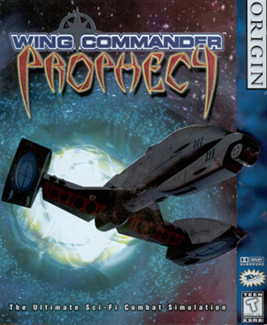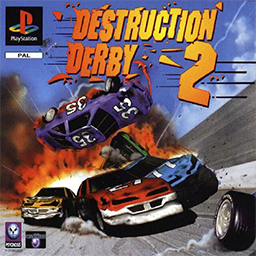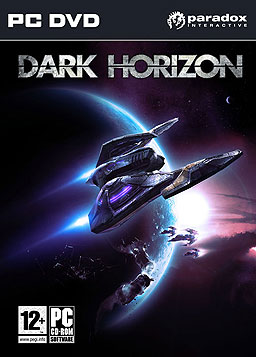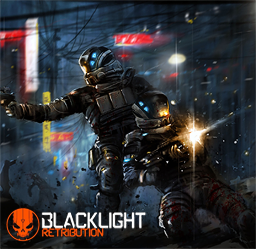
Exile is a series of role-playing video games created by Jeff Vogel of Spiderweb Software. They were released as shareware titles for Macintosh and Windows systems. Exile III was also ported to Linux by a third party. There were four games released in the series. All of the games were later revived in the Avernum series. Common to all games in the Exile series are 2D graphics and basic sound. The graphics in the first versions of Exile I and II had simple textures, colours and outlines, which were then replaced in later versions with Exile III's graphics. The games are designed to be non-linear and long in gameplay length.

688 Attack Sub is a submarine simulator video game designed by John W. Ratcliff and Paul Grace and published in 1989 for MS-DOS and in 1990 for Amiga by Electronic Arts. A Sega Genesis version developed by MicroProse was released in 1991 by Sega.

Midtown Madness is a 1999 racing game developed by Angel Studios and published by Microsoft for Microsoft Windows. The demo version was released in April 1999. Two sequels followed, with Midtown Madness 2 released in September 2000 and Midtown Madness 3 released in June 2003 for the Xbox. The game is set in Chicago; the object is for the player to win street races and obtain new cars.

Wipeout Fusion is a futuristic racing video game developed by Studio Liverpool and published by Sony Computer Entertainment for the PlayStation 2. It is the fifth instalment in the Wipeout series and was released in February 2002 in Europe, and in June for North America. It was the first Wipeout game to be published on the PlayStation 2. The game takes place in 2160 and revolves around players competing in the F9000 anti-gravity racing league.

Top Gear Rally is a 1997 racing video game developed by Boss Game Studios and released for the Nintendo 64. A follow-up to Kemco's original Top Gear game, it features a championship mode where a single player must complete six seasons of two to four races, as well as a multiplayer mode where two players may compete against each other via a split-screen display. The game's tracks combine both road and off-road surfaces and can be played in different weather conditions, including night, fog, rain, and snow. Players may customize their car with different tire grips and adjust its suspension stiffness and steering sensitivity. An option that allows players to custom paint their cars is also included.

Need for Speed II is a racing video game released in 1997 for PlayStation and Microsoft Windows. It is a part of the Need for Speed series and is the second installment, following The Need for Speed.

Need for Speed: High Stakes is a 1999 racing video game developed by EA Canada and EA Seattle and published by Electronic Arts for the PlayStation and Microsoft Windows. It is the fourth game in the Need for Speed series and a follow-up to Need for Speed III: Hot Pursuit. The game features more realistic elements than its predecessors and introduced a damage system that allows cars to take damage when colliding with objects, affecting their appearance and performance. It also introduced a series of economy-based tournaments, awarding players with a cash prize that can be spent on repairing, purchasing, or upgrading cars for subsequent races. The game's Hot Pursuit mode, which was introduced in Hot Pursuit, was expanded with more options, allowing players to control police pursuits attempting to stop racers.

Monster Truck Madness is a racing video game developed by Terminal Reality and published by Microsoft. It was released in North America on September 9, 1996. The game has twelve monster trucks and tasks the player with beating computer opponents. Checkpoints, multiple hidden shortcuts, and interactable objects commonly appear in the tracks. In the garage, the player modifies the truck to account for terrain surfaces. Online multiplayer is accessed with a modem, a local area network (LAN), or TCP/IP.

Sports Car GT is a 1999 racing sim game based on GT racing. It was published by Electronic Arts (EA) and developed by Image Space Incorporated for Microsoft Windows, and Point of View for PlayStation. Both editions of the game feature co-development by Westwood Studios. The PC version received "favorable" reviews, while the PlayStation version received "mixed" reviews.

Wing Commander: Prophecy is the fifth installment in the Wing Commander science fiction space combat simulator franchise of computer games. The game was originally released in 1997 for Windows, produced by Origin Systems and distributed by Electronic Arts, and in 2003, a GBA conversion was produced by Italy-based Raylight Studios and distributed by Destination Software.

Cobra Triangle is a 1989 racing, vehicular combat video game developed by Rare and released by Nintendo for the Nintendo Entertainment System. The player controls a weapon-equipped speedboat through 25 levels. Objectives include winning races, saving swimmers, and defusing bombs. The game also includes power-ups and is displayed from a 3D isometric perspective with automatic scrolling that follows the player's movement. The Stamper brothers designed the game and David Wise wrote its soundtrack. Computer and Video Games highly recommended the game and praised its graphics and gameplay. Later reviewers lauded its level diversity and noted its graphical similarities to previous Rare game R.C. Pro-Am. IGN and GamesRadar ranked Cobra Triangle among their top NES games. The latter considered Cobra Triangle emblematic of the NES era's aesthetic. It was also included in Rare's 2015 Xbox One retrospective compilation, Rare Replay.

Destruction Derby 2 is a vehicular combat racing video game developed by Reflections Interactive and published in 1996 by Psygnosis for Microsoft Windows and PlayStation. The sequel to Destruction Derby, players race with the goal of earning points by damaging opponent cars. Standard races and matches based in arenas with the goal of remaining the last player driving are also available. The game is an overhaul of the original and features ideas that did not make it into the first game including tracks that feature obstacles and improved realism. The car mechanics were also redesigned. Development was also focused on Americanisation: the game style shifted away from the British banger racing of the original, and the cars and music were changed to fit a NASCAR theme. The game features Paul Page as commentator, and the soundtrack was created by thrash metal bands Jug and Tuscan. The game was positively received, with reviewers praising the large tracks and car physics, though the PC version was criticised for its difficulty.

The Lord of the Rings: Conquest is a 2009 action game developed by Pandemic Studios and published by Electronic Arts. It is derived from The Lord of the Rings film trilogy, and borrows many gameplay mechanics from Pandemic's Star Wars: Battlefront games. The game allows the player to play as both the forces of good and evil.

Dark Horizon, released as Tarr Chronicles: Guardians of the Border in Russia, is a space combat simulation game developed by Russian team Quazar Studio and published by Paradox Interactive. The game released in North America on September 23, 2008. Dark Horizon is the prequel to Tarr Chronicles.

Blacklight: Retribution is a free-to-play first-person shooter video game developed and published by Hardsuit Labs for Microsoft Windows and PlayStation 4. It was initially published by Perfect World Entertainment on April 3, 2012, with a full Steam release on July 2. A PS4 version was released as a launch title in North America on November 15, 2013, followed by Europe on December 4.

Chivalry: Medieval Warfare is a multiplayer-focused hack and slash developed by Torn Banner Studios as their first commercial title. The game is set in a fictional setting. On September 20, 2012, a trailer was released which set the release date to October 16, 2012. The developers had confirmed that the game would be PC exclusive initially, but in October 2014, they confirmed that the game would be coming to PlayStation 3 and Xbox 360 in December 2014. A standalone expansion pack called Chivalry: Deadliest Warrior was announced on August 23, 2013, as a tie-in for the television series Deadliest Warrior. It was released on November 14, 2013.

Flotilla is a 2010 turn-based strategy space combat video game developed by Brendon Chung's studio, Blendo Games. The game was released in March 2010 on Steam for Microsoft Windows and on Xbox Live Indie Games for the Xbox 360. Flotilla was designed with Microsoft's XNA tools, and its development was influenced by animals as well as board games such as Axis and Allies and Arkham Horror. The game takes the player in an adventure through a randomly generated galaxy.

Cobalt is an action side-scrolling video game developed by Oxeye Game Studio and published by Mojang Studios. It was released on 2 February 2016 for Microsoft Windows, Xbox 360 and the Xbox One consoles.

Need for Speed: Most Wanted is a 2005 open-world racing video game, and the ninth installment in the Need for Speed series. Developed by EA Canada and EA Black Box and published by Electronic Arts, it was released in November 2005 for PlayStation 2, Xbox, GameCube, Nintendo DS, Microsoft Windows, Game Boy Advance and Xbox 360. An additional version, Need for Speed: Most Wanted 5-1-0, was released in the same year for PlayStation Portable. The game focuses on street racing-oriented gameplay involving a selection of events and racing circuits found within the fictional city of Rockport, with the game's main story involving players taking on the role of a street racer who must compete against 15 of the city's most elite street racers to become the most wanted racer of the group, in the process seeking revenge against one of the groups who took their car and developing a feud with the city's police department.

Crazy Frog Racer is a European and Australian only video game developed by Neko Entertainment and published by Digital Jesters. A year later in 2006 a sequel was released, entitled Crazy Frog Racer 2.





















